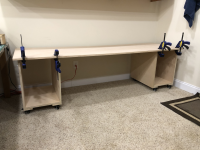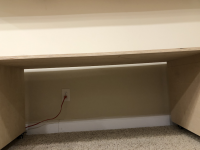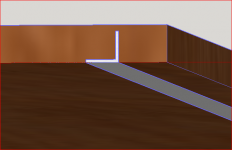Rick Herrick
Member
- Joined
- Feb 7, 2020
- Messages
- 814
I am trying to put together another sewing table for my wife. She wants it open enough in the center to put and use 2 machines at the same time. The end supports will be a couple of small cabinets for drawers. I am mocking up a demo now and I am looking for some suggestions on some 'under table' support. The boxes are ~ 425mm wide and I have ~ 1400mm of an opening. I will be adding an ~ 150mm rear vanity skirt which should help. Also thought about another, 50mm or so, stringer (on edge) in the middle to give more support. She just doesn't want anything in front. If I put something on the front, it doesn't give her the right height and clearance. Some of these machines have a knee controller so overall height and overall clearance is tight. The middle support won't be in the way.





